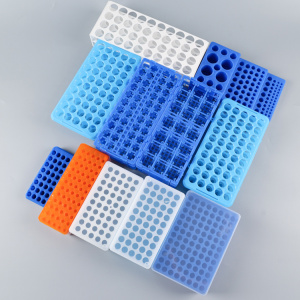How to choose the cell culture plate?
1) Cell culture plates can be divided into flat bottom and round bottom (U type and V type) according to the shape of the bottom.
2) The number of cell culture plate wells are 6 well cell culture plate, 12 well cell culture plate, 24 well cell culture plate, cell culture 48 well plate, 96 well cell culture plate, 384 well cell culture plate, etc.
3) There are Terasaki plates and ordinary cell culture plates according to the different materials. The specific selection depends on the type of cells to be cultured, the required culture volume and different experimental purposes.
Difference and selection of flat bottom and round bottom (U and V type) culture plates
1) Flat-bottom culture plates are generally used for walled cells.
2) Suspended cells are generally cultured with V-type.
3) U-type plates are also used to culture suspension type cells.
4) V-shaped plates are sometimes used for immunological hemagglutination experiments.

Flat-bottomed plates can be used for any type of cells, but when the number of cells is small, such as for cloning, 96-well flat-bottomed plates are used.
In addition, for MTT and other experiments, flat-bottom plates are generally used for both walled and suspended cells.
As for U- or V-shaped plates, they are generally used when there are special requirements. For example, in immunology, when two different lymphocytes are mixed in culture, they need to be in contact with each other for stimulation. Therefore, U plates are usually needed because the cells will gather in a small area due to gravity, and V plates are used much less frequently for cell killing experiments where V plates are often used to bring effective target cells into close contact, but U plates can also be used instead for such experiments (low speed centrifugation after cell addition).
For cell culture, flat-bottomed plates are usually used, and special attention should be paid to the material, as "Tissue Culture (TC) Treated" is used for cell culture.
The round bottom is usually used for analysis, chemical reaction, or sample storage. Because the round bottom is better to absorb the liquid cleanly, if you use the flat bottom is not good suction. However, if you want to measure the absorbance value, you must buy the flat-bottomed one.
Most cell cultures use flat-bottomed plates for easy microscopic observation, clear bottom area, relatively consistent cell culture surface height, and easy MTT detection.
Round-bottom plates are mainly used for isotope doping experiments that require a cell collector to collect cells, such as "mixed lymphocyte culture".
——



